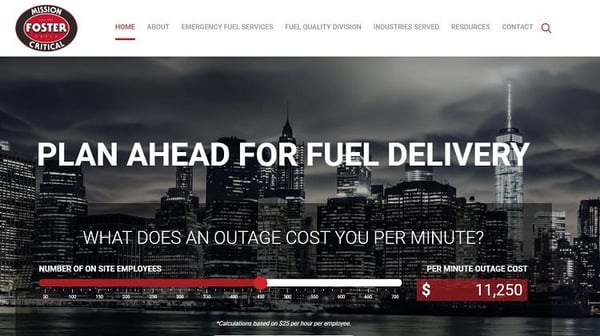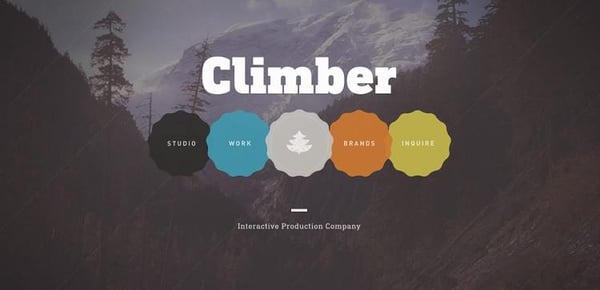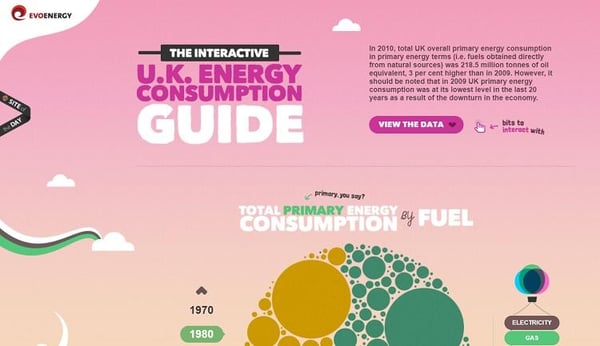Interactive web design is simply designing websites where the user engages actively with the page. What active engagement looks like is different from site to site, but includes items such as clickable elements, videos and actions the user must take to interact with the site.
Elements can be simple, such as an action when the mouse hovers over a button, or more complex.
There are many ways to increase engagement, but making your site interactive is a necessity if you want people to stick around longer and turn from browsers into customers.
While interactive web design isn’t necessary, it is something you should consider for your business. Here are eight reasons why:
1. Keep Visitors on Your Site Longer
Engaging site visitors keeps them on your website longer. Most people only read about 25 percent of a webpage before moving on.
Anything you can do to engage them and keep them on your site longer improves your bottom line. Reduce your bounce rate by adding interactive features.
Think about the last time you visited a website and how long you stayed there. If it was longer than a few seconds, what enticed you to stick around and look at things on that site?
More than likely, there was some form of engagement involved. Either a catchy headline grabbed you, you were watching a video or you were encouraged to take some other form of action. How can you repeat the same elements on your own website?
2. Offer a Tool
Another way to engage visitors is to offer some type of tool they want to use. Tools vary based on the purpose of your business, of course.
The key is to include something your target audience finds useful, so not only will they use it, but they will also tell others about it.
Take a step back and look at your site through the eyes of your typical customer. What kind of help do you need?

Foster Fuels has an interactive homepage that shows site visitors how much an outage costs a company per minute. The output is based on the number of employees.
Asking visitors to slide the bar over to reflect the number of employees in their company requires them to take an action and engages them in the information on the site.
3. Increase Conversions
Making your site interactive results in more conversions as people take an action on your site. Ideally, they will eventually click on your call to action (CTA) button.
The school of thought is that an interactive website builds trust each time the user does something. As they learn to trust you, they feel comfortable ordering from you.
4. Add Fun
An interactive website adds some fun to the customer experience. Instead of a flat, boring site, an interactive site allows the user to take various actions and see the results immediately.
Not only will your site provide information, but it will also do so in a fun and engaging way that draws visitors back time and time again.

Climber is a good example of a fun and engaging website. Users hover over icons that take them to different areas on the site.
As you hover over an icon, the icon spins. Run your mouse over all the icons, and it creates a sort of visual art that is quite fun to play with.
5. Offer Clues to What Visitors Like
Adding interactive features encourages site visitors to take action. In turn, you can then study where they are clicking and what elements they are most interested in.
This allows you to improve your website month after month, hitting on those features your visitors most want and personalizing your site to suit their needs.
6. Make Dry Info Interesting
Presenting statistics and dry facts is a little boring for most readers. If you can make that information interactive, site visitors absorb it better and are more likely to be interested.
There are a number of ways you can achieve this, including videos, interactive infographics and more.

EvoEnergy presents the U.K. Energy Consumption Guide to offer information to site visitors about energy usage over time in the United Kingdom.
The interactive infographic takes a factual subject and makes it fun and engaging. Hover over different circles or words, and different elements change or more information is revealed.
7. Let Visitors Contribute Content
Another way to engage visitors and make your website interactive is by allowing them to add content to your site. The content may be in the form of photos they upload, discussions they engage in or even articles they post as guests to your site.
There are any number of ways to encourage your customers to contribute to your site, including via social media and contests.
8. Become Memorable
There are a lot of websites out there. If you want to stand out, you need to do something unique. Creating an interactive website encourages visitors to engage while on your site and ups that chances consumers will remember your brand when they’re ready to order what you sell.
The more unique and personalized you make the experience on your site, the better your odds of being remembered. Think about the tools and information your target audience most wants and then give it to them in a unique way.
Get Interactive
An interactive design is unique and exciting. It encourages visitors to share your site with those they know and on social media. This benefits you because you gain free marketing without any additional effort.
There are many simple things you can do to create a more interactive website. While big interactive features are impressive, something as simple as a chat box or animated navigation buttons make your site unique and fun. Focus on the things you can easily change and then grow the interactivity of your site from there.


Lexie Lu
Lexie Lu is a freelance graphic designer and blogger. She keeps up with the latest design news and always has some coffee in close proximity. She writes on Design Roast and can be followed on Twitter @lexieludesigner.